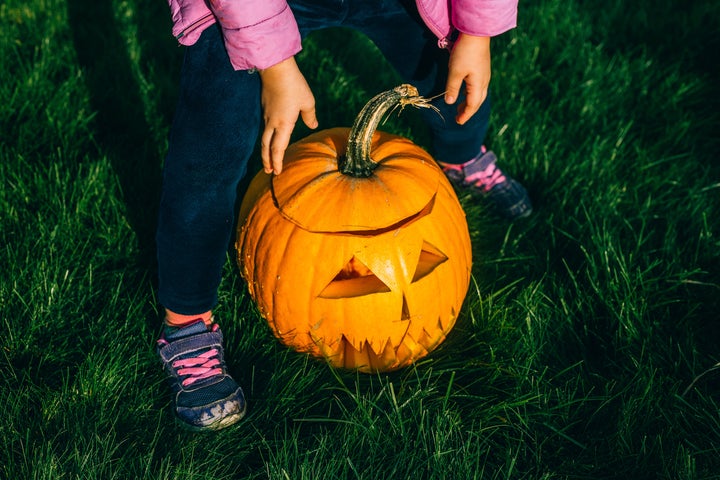
Every year, the same problem arises: we’ve emptied the contents of the pumpkin. We’ve made the soup, or the pie, or the fancy gnocchi.
The eerily grinning gourd lights up your doorway for three or four days; then, its orange innards singe at the corners, its skin wrinkles, and its face shrinks. A chorus erupts as one from front gardens nationwide; “what am I going to do with THAT?”.
Luckily, experts have shared how to use the discarded pumpkin for your garden. Chris Bonnet, founder of GardeningExpress.co.uk, says, “Repurposing pumpkins holds numerous benefits for both your garden and the environment. It’s a step towards reducing organic waste and decreasing the burden on landfills, and from a gardening perspective, pumpkins are a valuable resource because they’re rich in organic matter and nutrients.”
So, we thought we’d share five ways to use carved pumpkins after they’ve served their original purpose. Enjoy!
1) Chuck ’em on the compost
It seems obvious, but experts at Gardening Express say that pumpkins “are rich in organic matter and will break down over time, adding valuable nutrients to your compost.” Chop them up before adding them to your compost heap for faster decomposition.
2) Turn them into bird feeders
Yes, really ― Bonnet says that used carved pumpkins can make a surprisingly great bird food dispenser. “You can even help your local ecosystem by turning them into bird feeders or insect shelters,” he says.
They “can be used as DIY bird feeders by adding some string and hanging them in your garden,” experts say. Just “fill them with delicious bird food to attract your feathered friends to the garden” ― and be sure to hang them high off the ground, so you don’t attract rats or other pests.
3) Use them as planters
Yep, really ― you can repurpose your old pumpkin as planters. Just ” line them with weed fabric, fill them with potting soil and plant some hardy flowers. To prevent the pumpkin from rotting, make sure to apply a water-repellent lubricant like petroleum jelly or vegetable oil,” experts at Gardening Express say.
4) Make a bug hotel
Insects need homes over winter, and they’re an important food source for hungry bats and birds too ― so, you can “Place small pumpkins or pumpkin halves in your garden as hiding spots for beneficial insects like ladybugs and ground beetles.”
Aside from encouraging all-important biodiversity in your garden, “These insects can protect your precious plants from hungry pests” as a biological control, experts say.
5) Plant the pumpkin seeds
If you aren’t roasting every pumpkin seed you’ve removed for soup toppings, consider saving them ’til sowing season next year. “Store the seeds somewhere cold and dry and save them for spring,” experts recommend.
If you want to reuse your pumpkin for any of these (except composting), consider its condition, Bonnett says. “Make sure to consider the condition of the pumpkins, if they’re mouldy or rotting, it’s best to compost them rather than repurpose them in your garden.”
Still, better there than in your bin, right?